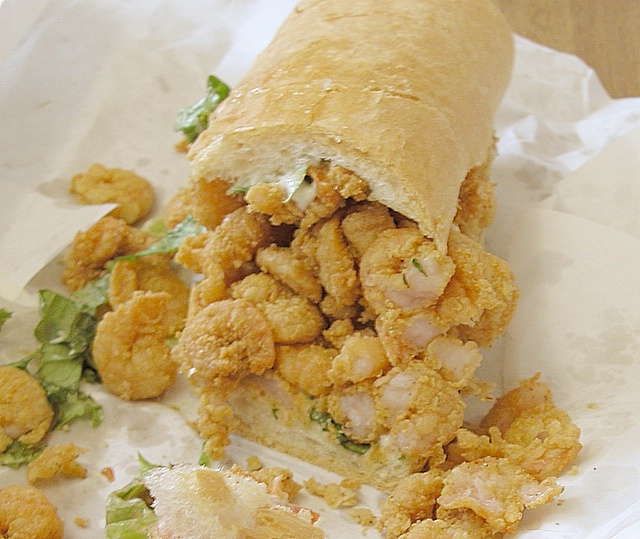FDA underestimated health risks of Gulf seafood following BP disaster, study finds

The concerns were often heard in Gulf Coast communities in the months after the BP oil disaster began unfolding last April: The federal Food & Drug Administration (FDA) was setting acceptable levels of seafood consumption that failed to adequately protect women and children from contaminants, and that did not account for the large amount of seafood that the region's residents eat.
A new study has found that those concerns were justified.
Research carried out by scientists affiliated with the Natural Resources Defense Council (NRDC) and published online this month in the peer-reviewed journal Environmental Health Perspectives found that the FDA seriously underestimated the health risks from contaminants in Gulf seafood following the BP disaster. The NRDC researchers focused on a group of chemicals called polycyclic aromatic hydrocarbons (PAHs), which are found in crude oil and have been linked to cancer and birth defects.
"We were surprised by how far off FDA's numbers really were," study co-author Miriam Rotkin-Ellman wrote on her blog. "FDA accepted 100 to 10,000 times more PAH contamination of seafood than our calculations deemed safe."
The FDA established its acceptable levels of contaminants based on the effects PAHs would have on a person weighing 176 pounds -- far more than children and many women weigh. Its calculations also used the average national seafood consumption rates, even though residents of the Gulf region eat as much as five times the national average. At the same time, the FDA did not consider the special harm that PAHs can do to young children and developing fetuses, and it ignored the cancer risk from the PAH naphthalene, a major contaminant in oil.
Rotkin-Ellman reports:
For example, FDA said that 123,000 micrograms of naphthalene per kilogram of shrimp was safe for everyone to eat. According to our calculations, only 5.91 micrograms should have been allowed to protect pregnant women and children who eat a lot of seafood. For comparison, our calculations show that 46.99 micrograms of naphthalene per kilogram of shellfish would be safe for an adult consumer.
The FDA has repeatedly claimed that there are no health risks from eating Gulf seafood, but the NRDC scientists found that claim was inaccurate. In fact, up to 53 percent of shrimp tested had PAH levels exceeding the scientists' revised levels of concern for pregnant women who are heavy consumers of Gulf shellfish. That means that if 1,000 pregnant women ate Gulf seafood with contamination levels that FDA claimed were safe, 20 of the children they bore would be at significant risk of cancer.
The NRDC scientists also discovered through documents obtained through Freedom of Information Act requests that the Environmental Protection Agency -- and even some FDA staff -- proposed stronger health protections but were ignored.
Following the study's release, the NRDC submitted a citizen petition to the FDA asking it to recognize the hazards posed by PAHs in seafood and to set more protective safety standards.
(Photo of traditional Louisiana shrimp po' boy sandwich by Jason Perlow via Wikimedia Commons.)
Tags
Sue Sturgis
Sue is the former editorial director of Facing South and the Institute for Southern Studies.
